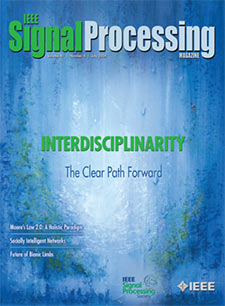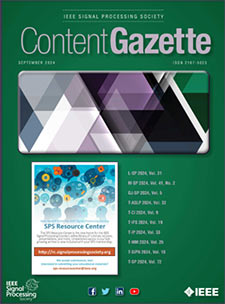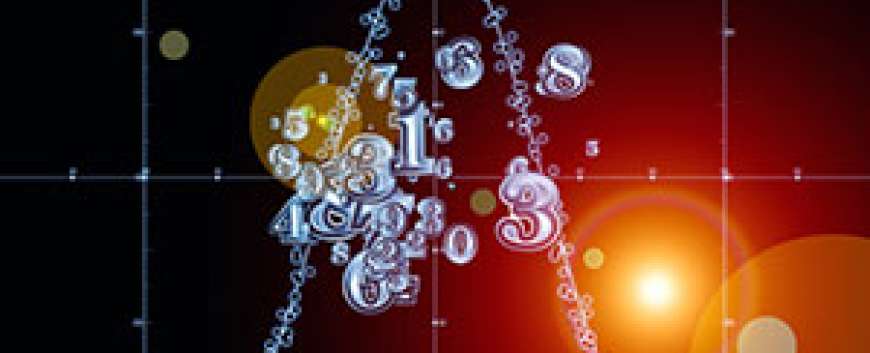- Our Story
- Publications & Resources
- Publications & Resources
- Publications
- IEEE Signal Processing Magazine
- IEEE Journal of Selected Topics in Signal Processing
- IEEE Signal Processing Letters
- IEEE/ACM Transactions on Audio Speech and Language Processing
- IEEE Transactions on Computational Imaging
- IEEE Transactions on Image Processing
- IEEE Transactions on Information Forensics and Security
- IEEE Transactions on Multimedia
- IEEE Transactions on Signal and Information Processing over Networks
- IEEE Transactions on Signal Processing
- IEEE TCI
- IEEE TSIPN
- Data & Challenges
- Submit Manuscript
- Guidelines
- Information for Authors
- Special Issue Deadlines
- Overview Articles
- Top Accessed Articles
- SPS Newsletter
- SigPort
- SPS Resource Center
- Publications FAQ
- Blog
- News
- Dataset Papers
- Conferences & Events
- Community & Involvement
- Professional Development
- For Volunteers
- Information for Authors-OJSP
-
Home
Conferences Events IEEE JSTSP Article IEEE Signal Processing Magazine IEEE TIFS Article IEEE TMM Article IEEE TSP Article Jobs in Signal Processing Lectures Machine Learning Seasonal Schools Signal Processing News SPM Article SPS Distinguished Lectures SPS Newsletter Article SPS Webinar SPS Webinars SPS Webinar Series Webinar webinars
-
Our Story
What is Signal Processing?

The technology we use, and even rely on, in our everyday lives –computers, radios, video, cell phones – is enabled by signal processing. Learn More » -
Publications & Resources
-
SPS Resources
- Signal Processing Magazine The premier publication of the society.
- SPS Newsletter Monthly updates in Signal Processing
- SPS Resource Center Online library of tutorials, lectures, and presentations.
- SigPort Online repository for reports, papers, and more.
- SPS Feed The latest news, events, and more from the world of Signal Processing.
-
SPS Resources
-
Conferences & Events
-
Community & Involvement
-
Membership
- Join SPS The IEEE Signal Processing Magazine, Conference, Discounts, Awards, Collaborations, and more!
- Chapter Locator Find your local chapter and connect with fellow industry professionals, academics and students
- Women in Signal Processing Networking and engagement opportunities for women across signal processing disciplines
- Students Scholarships, conference discounts, travel grants, SP Cup, VIP Cup, 5-MICC
- Young Professionals Career development opportunities, networking
- Get Involved
-
Technical Committees
- Applied Signal Processing Systems
- Audio and Acoustic Signal Processing
- Bio Imaging and Signal Processing
- Computational Imaging
- Image Video and Multidimensional Signal Processing
- Information Forensics and Security
- Machine Learning for Signal Processing
- Multimedia Signal Processing
- Sensor Array and Multichannel
- Signal Processing for Communication and Networking
- Signal Processing Theory and Methods
- Speech and Language Processing
- Technical Working Groups
- More TC Resources
-
Membership
-
Professional Development
-
Professional Development
- Mentoring Experiences for Underrepresented Young Researchers (ME-UYR)
- Micro Mentoring Experience Program (MiME)
- Distinguished Lecturer Program
- Distinguished Lecturers
- Distinguished Lecturer Nominations
- Past Lecturers
- Distinguished Industry Speaker Program
- Distinguished Industry Speakers
- Distinguished Industry Speaker Nominations
- Industry Resources
- IEEE Training Materials
- Jobs in Signal Processing: IEEE Job Site
-
Career Resources
- SPS Education Program Educational content in signal processing and related fields.
- Distinguished Lecturer Program Chapters have access to educators and authors in the fields of Signal Processing
- PROGRESS Initiative Promoting diversity in the field of signal processing.
- Job Opportunities Signal Processing and Technical Committee specific job opportunities
- Job Submission Form Employers may submit opportunities in the area of Signal Processing.
-
Professional Development
-
For Volunteers
-
For Board & Committee Members
- Board Agenda/Minutes* Agendas, minutes and supporting documentation for Board and Committee Members
- SPS Directory* Directory of volunteers, society and division directory for Board and Committee Members.
- Membership Development Reports* Insight into the Society’s month-over-month and year-over-year growths and declines for Board and Committee Members
-
For Board & Committee Members
Popular Pages
Today's:
- 404 Page
- (ISBI 2025) 2025 IEEE International Symposium on Biomedical Imaging
- IEEE SPS 2024 Members-at-Large and Regional Directors-at-Large Election Results
- Information for Authors
- Submit a Manuscript
- IEEE Transactions on Information Forensics and Security
- IEEE SPM Special Issue on the Mathematics of Deep Learning
- Congratulations to the 2024 SPS Scholarship Recipients!
- Signal Processing 101
- IEEE Signal Processing Letters
- Board of Governors
- Conferences & Events
- Access Restricted
- IEEE SPM Special Issue on Artificial Intelligence for Education: A Signal Processing Perspective
- Conference Call for Papers
All time:
- Information for Authors
- Submit a Manuscript
- IEEE Transactions on Image Processing
- 404 Page
- IEEE/ACM Transactions on Audio Speech and Language Processing
- IEEE Transactions on Information Forensics and Security
- IEEE Transactions on Multimedia
- IEEE Signal Processing Letters
- IEEE Transactions on Signal Processing
- Conferences & Events
- IEEE Journal of Selected Topics in Signal Processing
- Conference Call for Papers
- Information for Authors-SPL
- Signal Processing 101
- IEEE Signal Processing Magazine
Last viewed:
- IEEE Transactions on Image Processing
- Information for Authors
- EDICS
- Guidelines for Associate Editors
- (ME-UYR) Mentoring Experiences for Underrepresented Young Researchers Program
- Guidelines
- IEEE Signal Processing Letters
- New Book: Advanced Data Analytics for Power Systems
- IEEE Transactions on Information Forensics and Security
- IEEE SPM Special Issue on the Mathematics of Deep Learning
- Information for Authors-SPM
- Call for Project Proposals: IEEE SPS ME-UYR Program - Mentoring Experiences for Underrepresented Young Researchers
- IEEE Signal Processing Magazine
- Conferences & Events
- 404 Page
Newsletter Menu
Newsletter Categories
Top Reasons to Join SPS Today!
1. IEEE Signal Processing Magazine
2. Signal Processing Digital Library*
3. Inside Signal Processing Newsletter
4. SPS Resource Center
5. Career advancement & recognition
6. Discounts on conferences and publications
7. Professional networking
8. Communities for students, young professionals, and women
9. Volunteer opportunities
10. Coming soon! PDH/CEU credits
Click here to learn more.
News and Resources for Members of the IEEE Signal Processing Society
Special Issue of SPM: Computational MRI

The process of forming images from measured data using computational algorithms is referred to as computational imaging. Rapid advances in computational hardware and signal processing algorithms have resulted in a flurry of activity in computational imaging in several application areas, including medicine, biology, remote sensing, and seismic imaging. Medical imaging has witnessed extensive research in computational imaging, beginning with computed tomography (CT), which relies on algorithms to construct a 3D volume from X-ray measurements taken from X-ray projections at different angles; this work received the 1979 Nobel Prize in Medicine. Most of the current medical-imaging modalities [e.g., magnetic resonance imaging (MRI), CT, positron emission tomography] employ computational imaging in one form or another.
Advances in computational MRI were primarily driven in the last decade by parallel image acquisition using multiple receiver coils and compressed sensing (CS). The ability of these approaches to break the classical Nyquist sampling limit has been exploited to considerably reduce the acquisition time in static imaging applications and to significantly improve the spatial and temporal resolution in dynamic imaging applications. Extensive research in this area has facilitated developments of efficient transforms, novel regularization priors, smart acquisition strategies, fast optimization algorithms, and computational toolboxes. The recent U.S. Food and Drug Administration approval of CS products for clinical scans makes MRI one of the main benefactors of CS algorithms.
While the application of CS-based algorithms in medical imaging is maturing, the recent research in this area has initiated a new computational way of thinking. The main focus of this special issue of IEEE Signal Processing Magazine (SPM), entitled Computational MRI: Compressive Sensing and Beyond in Jan. 2020, is on recent developments in computational MRI. These developments are pushing the frontier of computational imaging beyond CS. Similar to CS, most of these algorithms rely on image representation in one form or another. However, the common recent thread is the departure from handcrafted image representations (e.g., sparse wavelet model) to learning-based image representations. These learned representations are seamlessly combined with clever measurement strategies to significantly advance the state of the art in a number of areas. Several exciting applications including significantly improved spatial and temporal resolution, a considerable reduction in scan time, measurement of biophysical parameters directly from highly undersampled data, and direct measurement of very high-dimensional data are reviewed in this special issue of SPM.
This describes key ideas underlying the computational approaches used in MRI. These approaches range from CS algorithms that rely on fixed transforms or dictionaries, to adaptive or shallow-learning algorithms that adapt the image representation to the data (e.g., low-rank and dictionary-based methods), to recent deep-learning methods that learn a highly nonlinear representation from exemplar data. The articles provide insight into the capabilities of the current algorithms, their limitations, and their utility in challenging MRI problems. While the focus of this special issue is on medical imaging and in particular MRI, most of the problems, and hence solutions, are easily translatable to signal recovery applications in other areas.
Open Calls
| Nomination/Position |
Deadline |
|---|---|
| Call for Proposals: 2025 Cycle 1 Seasonal Schools & Member Driven Initiatives in Signal Processing | 17 November 2024 |
| Call for Nominations: IEEE Technical Field Awards | 15 January 2025 |
| Nominate an IEEE Fellow Today! | 7 February 2025 |
Publications News
Society News
- OU Analytics - Tip of the Month
- Sections Congress 2020: New Opportunities to Learn and Network
- 2019 Financial and Officer Reporting Dates
- Job Opportunities in Signal Processing
- Upcoming Distinguished Lectures
- Hyderabad Chapter selected as the 2019 SPS Chapter of the Year Award recipient
- New SPS Chapters in 2019
Education & Resources
Technical Committee News
Member Highlights
PhD Theses
Conferences & Events
SPS Social Media
- IEEE SPS Facebook Page https://www.facebook.com/ieeeSPS
- IEEE SPS X Page https://x.com/IEEEsps
- IEEE SPS Instagram Page https://www.instagram.com/ieeesps/?hl=en
- IEEE SPS LinkedIn Page https://www.linkedin.com/company/ieeesps/
- IEEE SPS YouTube Channel https://www.youtube.com/ieeeSPS
Home | Sitemap | Contact | Accessibility | Nondiscrimination Policy | IEEE Ethics Reporting | IEEE Privacy Policy | Terms | Feedback
© Copyright 2024 IEEE – All rights reserved. Use of this website signifies your agreement to the IEEE Terms and Conditions.
A not-for-profit organization, IEEE is the world's largest technical professional organization dedicated to advancing technology for the benefit of humanity.









